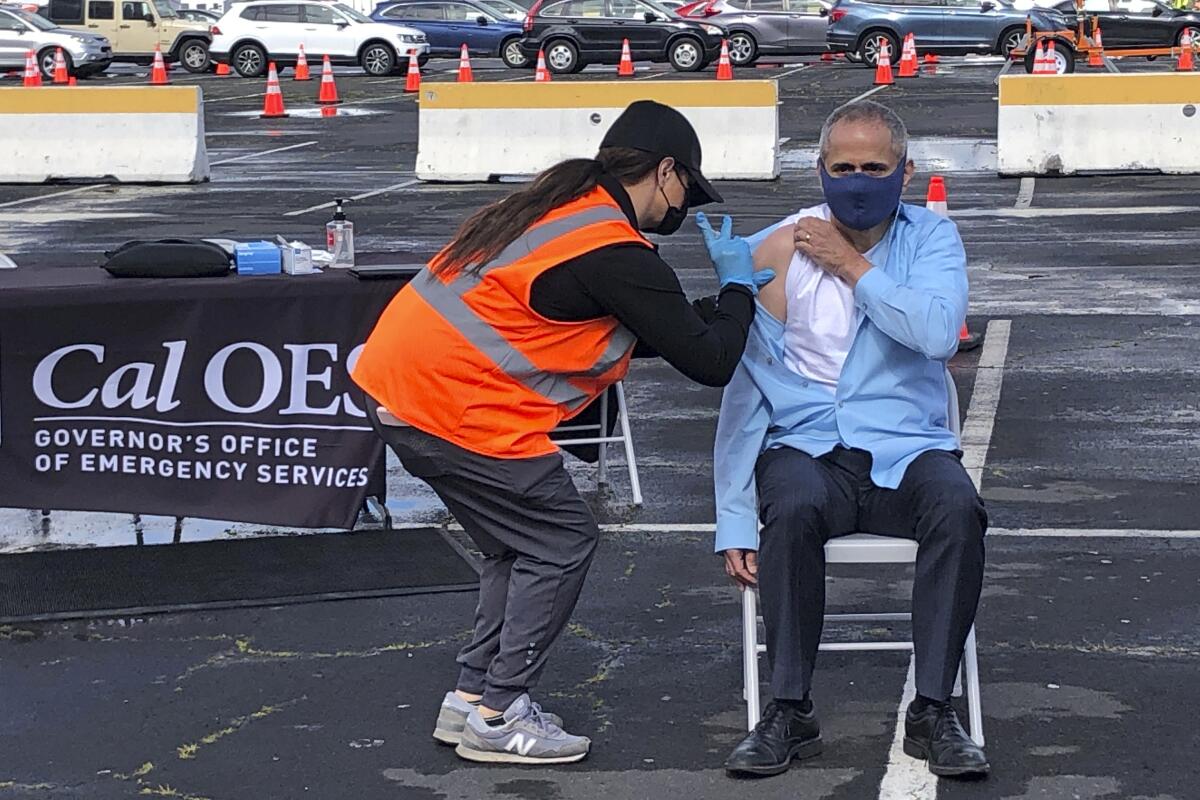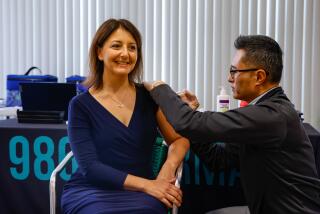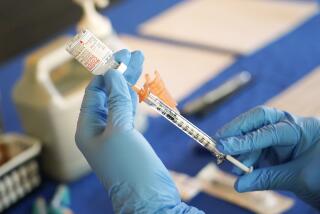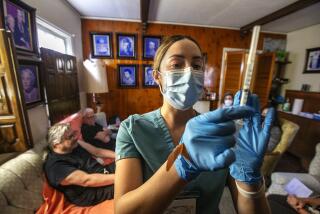Editorial: There’s no such thing as a second-class COVID vaccine

Dr. Mark Ghaly, California’s Health and Human Services secretary, rolled up his shirt sleeve before TV cameras and reporters Thursday at Baldwin Hills Crenshaw Plaza to get inoculated with the newest COVID-19 vaccine authorized for use in the U.S., a one-shot version made by Johnson & Johnson. In Oakland, the state’s surgeon general, and public health director and other top health officials did the same.
The events were convened in largely non-white communities as part of an effort to assure people hesitant to get vaccinated that the shots are safe — and that this one in particular is not an inferior version, despite having less impressive results in clinical trials than the other two vaccines available in the U.S.
Such doubts have already taken root, as L.A. Times columnist Erika D. Smith reported last week. Health officials are rightly worried that as the Johnson & Johnson shot becomes more available, people might reject it as “second-class shot” foisted on low-income residents and communities of color while the “better” vaccines from Pfizer and Moderna are reserved for wealthier and whiter areas. It’s certainly an understandable fear, considering the racial disparities in infections and in the initial phase of the vaccine rollout.
But it’s a dangerous notion that must be countered at every point. Not only is it untrue — all three vaccines are highly effective at preventing sickness and death — but saying no to a perfectly good shot leaves people open to the infection and its potentially fatal consequence. It also increases the opportunities for more dangerous COVID variants to get a toehold, a nightmarish scenario in which all of the vaccines could be rendered less effective.
Besides, all of the vaccines greatly exceed the threshold set by world health officials — at least 50% effectiveness during clinical trials — and none have been associated with critical illness or death. The Pfizer and Moderna shots have demonstrated efficacy rates of about 95%, and Johnson & Johnson of 72%. But experts say you can’t compare these figures because the vaccines were tested at different points during the pandemic and in different countries. Indeed, in the end, it may turn out that the Johnson & Johnson vaccine becomes prized because it was tested in countries where more contagious variants were circulating.
The reality is that all three come with both tremendous benefits and some minor downsides. The Pfizer and Moderna vaccines require two shots taken weeks apart, and both have more restrictive cold storage requirements that make them more challenging to distribute than the Johnson & Johnson vaccine. Meanwhile, the Johnson & Johnson needs but a single jab, and those who received it reported fewer serious side effects than the other two vaccines caused.
While it’s a great thing that Americans are so well-informed about the various COVID-19 vaccines, it’s also true that a little knowledge can be a dangerous thing. Ultimately, the most important thing to know is that at this point in the pandemic, the best vaccine is the one that gets into your body.
More to Read
A cure for the common opinion
Get thought-provoking perspectives with our weekly newsletter.
You may occasionally receive promotional content from the Los Angeles Times.










